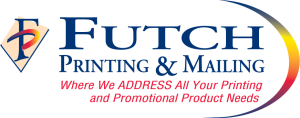 Fear. Stress. Helplessness.
Fear. Stress. Helplessness.
Whether you’re caring for elderly parents or homeschooling your kids, people across the globe are struggling with big emotions during the COVID-19 situation.
How do you lead well in times like these? While daily leadership is essential for your business, crisis moments reveal the quality of your vision like nothing else. And while you may be exhausted or overwhelmed, now is not the time to push pause on your leadership. What are the “next best steps” you can take in this hour of uncertainty?
1. Increase the Frequency of Communication
During hard times, the frequency of communication should go through the roof.
Even if you have bad news, it’s important to acknowledge this ASAP. While you may not have all the details, a prompt announcement can minimize speculation, reassure panicked contacts, and let people know that you are proactively addressing each challenge.
2. Be Authentic
Now, more than ever, people are craving connection. Since many of your customers and subscribers are working from the kitchen table, this is an important chance to re-tool your communication. Get in touch with your own feeling of isolation and use this to inform your messaging. From email communication to print mailings, review all your messages through the lens of people who are stuck at home. Ditch the corporate-speak and seek a more human tone for your brand, and use this framework to empower empathy while focusing on others’ needs.
3. Break Up the Depressive Mindset
All of us need a break from 24/7 bad news. So, how can you bring positivity in this hour?
Noting the deluge of video-conferencing, Audi of America recently launched a series of specially curated images to serve as a glamorous backdrop in virtual meeting rooms. Now enthusiasts can bring their favorite Audi with them to their next conference call or virtual happy hour, and Audi plans to release new images weekly. Simple pleasures make a big difference in tough moments!
Now, make it personal. How can you sound a note of joy or generosity today? Could you post a funny video, release a helpful blog, highlight hero stories, or offer incentives that benefit customers or people on the front lines?
Or look at your own product mix and ask: “what could I change to help my customers?” Do you have a paid or premium service that you could offer for free to help people get by over the next few months?
4. Sow Seeds of Honor
When you look at your schedule today, things seem rather quiet and eerie. Companies of all sizes have sent people home, and every distraction has been silenced. While the coronavirus has ushered in strange times for all, good leaders won’t just hunker down. Instead, it’s time to push back with a different spirit.
In an age of mocking and disdain, today is a great day to show respect and gratitude. Whether personally or professionally, use this forced pause to repair a strained relationship, to say thank you, or to serve others. Make that difficult phone call. Donate blood or serve at your local food pantry. Show public or private appreciation for your leaders. And appreciate people who don’t deserve it (despite their inadequacies).
As you honor people, they will honor others. Perhaps this is a chance to shift the atmosphere and proactively build honor into the fabric of your network. As a leader, you WILL set the pace for others.
Connection is the New Currency
Though today’s challenges are extreme, it’s important to remember they’re only temporary. It may not be easy, but many of us will come out of this stronger. Though it may feel that the waves are continuing to rise, take heart. Prioritize connection, and the uncharted waters can be parted in order to lead you toward a prosperous future and a newfound hope.


 In fast-moving and uncertain situations, communication can be a challenge.
In fast-moving and uncertain situations, communication can be a challenge. We are in a totally different world right now.
We are in a totally different world right now.

 When you are trying to reach a wide demographic for your business, you must get on social media. By developing a following on social media and learning how to use text messaging to get customers interested in your brand, you’ll be on your way to building up a solid customer base.
When you are trying to reach a wide demographic for your business, you must get on social media. By developing a following on social media and learning how to use text messaging to get customers interested in your brand, you’ll be on your way to building up a solid customer base. rtunity that far too many people don’t take advantage of is the idea of a quarterly audit. Don’t worry; it has nothing to do with your taxes. Instead, it’s a process that you should go through a few times a year that provides you a chance to re-assess and re-evaluate. It’s a time where you force yourself to stop and think “This print mailer was designed in January, and it worked great in January. It’s August now. What needs to change?”
rtunity that far too many people don’t take advantage of is the idea of a quarterly audit. Don’t worry; it has nothing to do with your taxes. Instead, it’s a process that you should go through a few times a year that provides you a chance to re-assess and re-evaluate. It’s a time where you force yourself to stop and think “This print mailer was designed in January, and it worked great in January. It’s August now. What needs to change?” The temperature is soaring, steaks sizzle on the grill, and kids play in the pool, but not everyone is thinking summer. Back to school season is starting earlier than ever for big retailers and the impact trickles over into all aspects of marketing. Both Office Depot and Land’s End launch back to school campaigns at the start of summer – in some cases before school even ended in some parts of the country.
The temperature is soaring, steaks sizzle on the grill, and kids play in the pool, but not everyone is thinking summer. Back to school season is starting earlier than ever for big retailers and the impact trickles over into all aspects of marketing. Both Office Depot and Land’s End launch back to school campaigns at the start of summer – in some cases before school even ended in some parts of the country. Every day but Sunday, the mailbox delivers surprises. Of course, much of what arrives in the mail is expected, but that element of surprise never wanes. The mail might contain a card from a loved one, a check you didn’t expect, or a great offer from a local company, via direct marketing. Successful direct marketing campaigns don’t happen by accident, but a small business doesn’t need to pour substantial amounts of money into such an endeavor to achieve a good result. That means rather than mass marketing, modern direct mail campaigns concentrate on targeted marketing. When businesses use effective
Every day but Sunday, the mailbox delivers surprises. Of course, much of what arrives in the mail is expected, but that element of surprise never wanes. The mail might contain a card from a loved one, a check you didn’t expect, or a great offer from a local company, via direct marketing. Successful direct marketing campaigns don’t happen by accident, but a small business doesn’t need to pour substantial amounts of money into such an endeavor to achieve a good result. That means rather than mass marketing, modern direct mail campaigns concentrate on targeted marketing. When businesses use effective  In a recent study conducted by KissMetrics.com, visual appearance and color ranked more important to consumers than just about everything else when viewing marketing materials. In fact, ninety-three percent of people who responded to the survey said that visual appearance (which color is a part of) was the most important factor they used when making a purchasing decision. Just six percent said texture, and only one percent placed a heavy value on sound and smell.
In a recent study conducted by KissMetrics.com, visual appearance and color ranked more important to consumers than just about everything else when viewing marketing materials. In fact, ninety-three percent of people who responded to the survey said that visual appearance (which color is a part of) was the most important factor they used when making a purchasing decision. Just six percent said texture, and only one percent placed a heavy value on sound and smell.